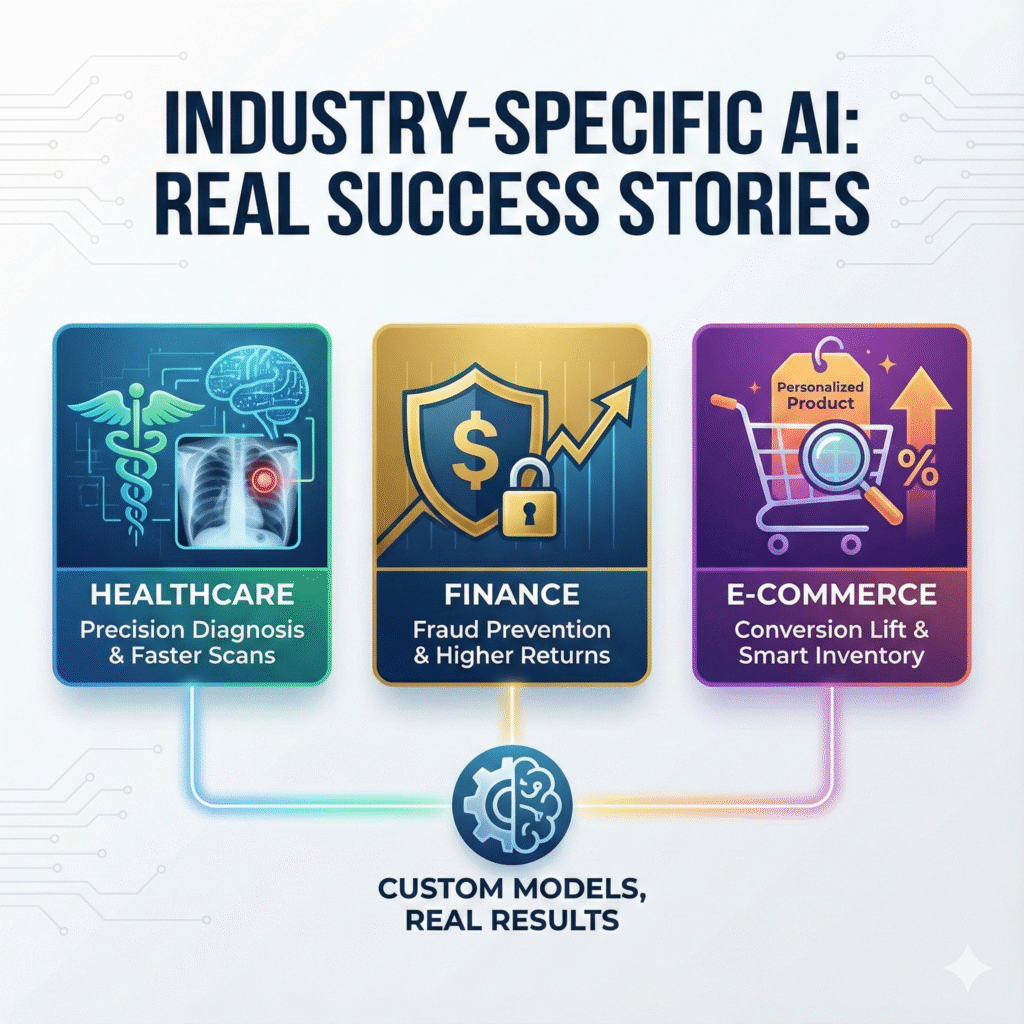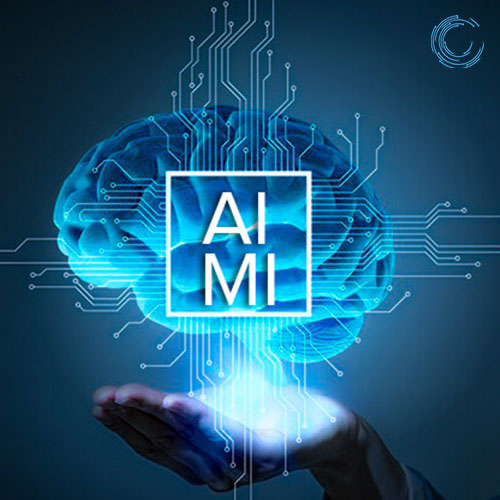Industry-Specific AI Models: Real Success in Healthcare, Finance & E-commerce
Walk into any boardroom in 2025 and you will hear the same line: “We’re doing AI.” (Industry Specific AI Models)Then look at the results.The companies quietly pulling ahead are not the ones who bought the shiniest SaaS dashboard.They are the ones who built AI that speaks their industry’s language. Here is what happens when you stop forcing generic tools into specialized worlds and start building models that understand the job. Healthcare – When Seconds and Lives Are on the Line A top-tier hospital network was losing precious minutes on chest scans.The off-the-shelf radiology AI kept missing subtle nodules and flagging shadows that turned out to be nothing. They trained a custom deep-learning model on fifteen years of their own annotated scans, technician notes, patient outcomes, and even the quirks of their specific MRI machines. Outcome:The model now spots lung abnormalities 20% faster and cuts false negatives by 10–15%.Radiologists went from doubting the AI to refusing to read a scan without it. Another oncology centre built a recommendation engine that digests genetic profiles, trial data, and past treatment responses from their own patient cohort.Targeted therapy match accuracy jumped 30%, side effects dropped, and drug costs fell because the right treatment was chosen the first time. Finance – Where False Positives Cost Millions One of the largest U.S. banks used to freeze thousands of legitimate cards every weekend because the vendor fraud tool could not tell the difference between a vacation in Bali and a stolen card. They built their own anomaly model using device fingerprints, typing cadence, usual coffee-shop locations, even how far the customer normally drives on Sundays. False positives crashed 50%.Fraud losses dropped by millions a year.Customer complaints about blocked cards became a non-issue. A global hedge fund took it further.Their custom sequence-to-sequence neural network eats macro data, sentiment, order-book imbalance, and satellite imagery of crop yields.Annualized returns beat the benchmark by 13% with lower drawdowns than any commercial trading bot. E-commerce – Turning Clicks into Cash A mid-sized fashion retailer was stuck at 1.8% conversion with a popular plug-and-play recommendation widget. They replaced it with a model that watches what users linger on (but do not click), style-quiz answers, weather at the shipping address, and Instagram likes. Conversion rate hit 28% lift.Average order value rose 17%.The widget vendor still sends them renewal invoices they never open. Another marketplace trained a demand-sensing model on 40 million SKUs, competitor pricing, TikTok trends, and local events.Forecast error fell 35%, excess inventory costs dropped 22%, and for the first time in years they did not have to fire-sale summer dresses in September. The Pattern Nobody Talks About Every single winner above shares three things: Generic tools give everyone a fishing rod.Industry-specific custom models teach the fish to jump straight into your boat. Your Industry Is Next Whether you are predicting patient no-shows, fraudulent wire transfers, or the next viral hoodie colour, the playbook is the same: own your data, own your model, own your future. The companies winning today are not waiting for the perfect universal AI.They are building the perfect AI for their corner of the universe.
Industry-Specific AI Models: Real Success in Healthcare, Finance & E-commerce Read More »




